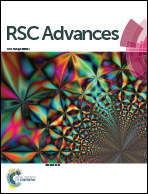Strategy for enhanced performance of silicon nanoparticle anodes for lithium-ion batteries†
Abstract
The modification of silicon nanoparticles for lithium-ion battery anode materials has been a hot exploration subject in light of their excellent volume buffering performance. However, huge volume expansion leads to an unstable solid electrolyte interface (SEI) layer on the surface of the silicon anode material, resulting in short cell cycle life, which is an important factor limiting the application of silicon nanoparticles. Herein, a dual protection strategy to improve the cycling stability of commercial silicon nanoparticles is demonstrated. Specifically, the Si/s-C@TiO2 composite was produced by the hydrothermal method to achieve the embedding of commercial silicon nanoparticles in spherical carbon and the coating of the amorphous TiO2 shell on the outer surface. Buffering of silicon nanoparticle volume expansion by spherical carbon and also the stabilization of the TiO2 shell with high mechanical strength on the surface constructed a stable outer surface SEI layer of the new Si/s-C@TiO2 electrode during longer cycling. In addition, the spherical carbon and lithiated TiO2 further enhanced the electronic and ionic conductivity of the composite. Electrochemical measurements showed that the Si/s-C@TiO2 composite exhibited excellent lithium storage performance (780 mA h g−1 after 100 cycles at a current density of 0.2 A g−1 with a coulombic efficiency of 99%). Our strategy offers new ideas for the production of high stability and high-performance anode materials for lithium-ion batteries.



 Please wait while we load your content...
Please wait while we load your content...